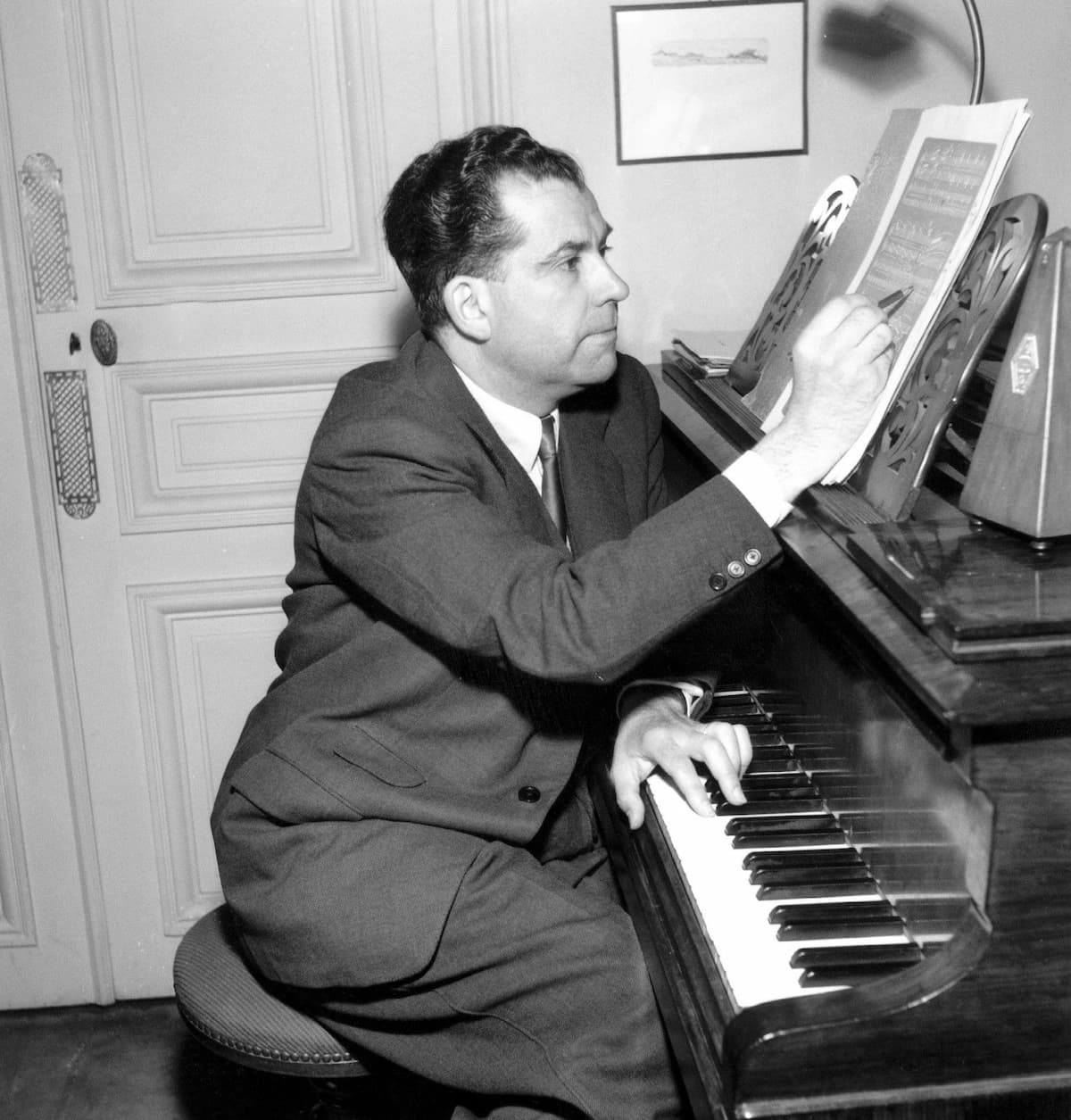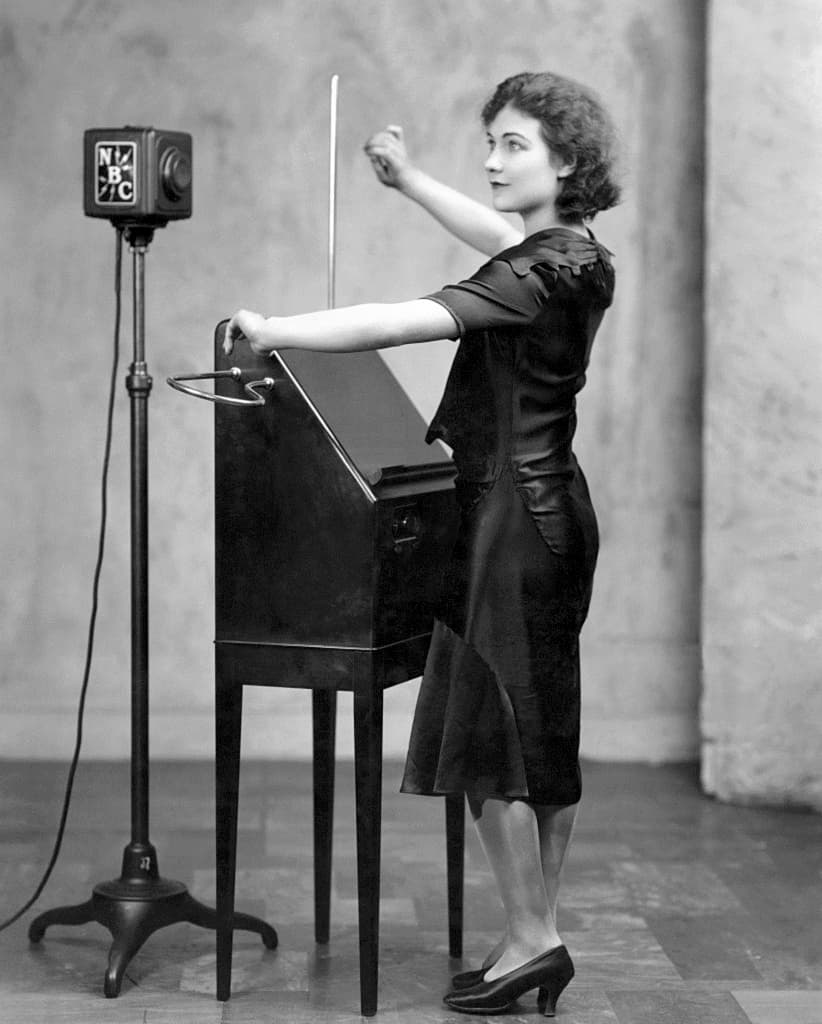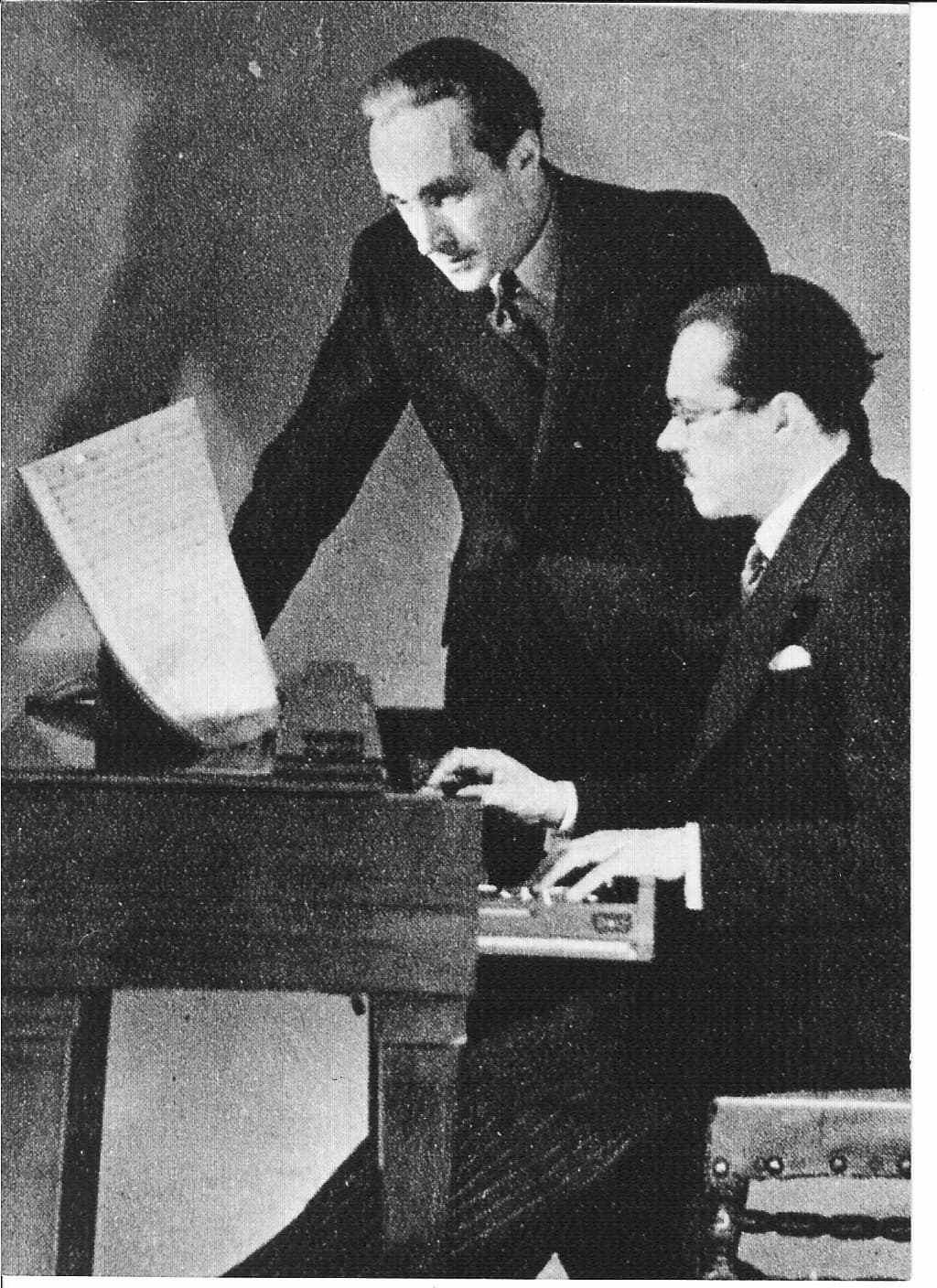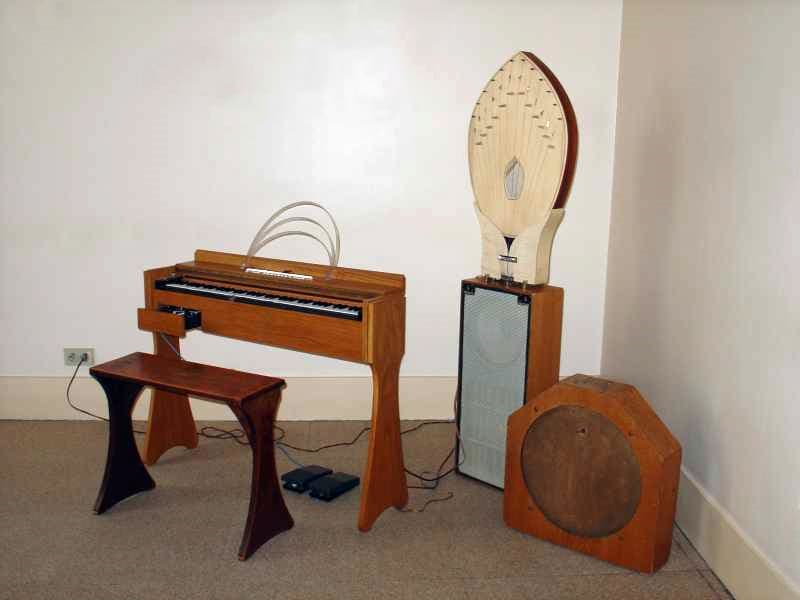On 23 April 1948, the city of Vienna was treated to a most unusual premiere. On that day, André Jolivet stepped onto the podium and, together with his sister Ginette as the soloist, first presented his Concerto for Ondes Martenot to the public. Jolivet had been a student of Paul Le Flem and Edgar Varese, and he was a member of a group of four composers who called themselves “La Jeune France,” in 1936. Oliver Messiaen, Daniel Lesure, and Yves Baudrier were the other members of this group.

André Jolivet
All four composers certainly had one thing in common: they all found use for the “Ondes Martenot” in music. Jolivet’s concerto dates from 1947, and it was described as “a kind of symphonic poem in which the Martenot personifies light in contrast to the dark and chaotic impression which the orchestra produces in the first movement. The sombre orchestra opposes and threatens the luminous line of the solo instrument throughout.”
The concerto is scored without key or metric signature, as the beast changes from bar to bar throughout the score. The opening movement unfolds as subdued background music with an impressionist character, with the solo instrument playing the primary theme in the high range. A second movement, “Scherzo,” calls for rapid finger work in the solo part, while the concluding “Largo” presents the melodic possibilities of this most unusual solo instrument.
André Jolivet: Ondes Martenot Concerto – I. Allegro moderato (Ondes Martenot, percussion; Paris National Opera Orchestra; André Jolivet, cond.)
Thermin and Ondes Martenot

Alexandra Stepanoff playing the theremin on NBC Radio
This most unusual musical instrument was simultaneously invented in Russia and in France. The Russian spy and scientist Leon Theremin was conducting research on a sensor that could detect the human aura. Testing the density of various gases, he heard a high squeal as his hand approached the contraption. And when he brought his hand back to his body and away from the machine, it was a slower and lower squeal. Theremin constructed a freestanding musical instrument, aptly named “Theremin” that is played by moving the hands through two electromagnetic fields surrounding two antennas, with the relative position of the hands determining pitch and dynamic levels.

Vellones and Maurice Martenot
Around the same time, Maurice Martenot, a cellist and radio operator in WW I was mesmerized by the overlaps of tones from military radio oscillators and imagined an electronic musical instrument. The main interface of the aptly named “Ondes Martenot,” was a metal ring worn on the player’s right index finger. Sliding the ring up and down a wire created sweeping and eerie glissandi. Martenot eventually improved that system by adding a four-octave keyboard, a contraption that produces no sound but controls the musical dynamics. Both the Theremin and Ondes Martenot were patented in the same year, in 1928.
André Jolivet: Ondes Martenot Concerto – II. Allegro vivace (Ondes Martenot, percussion; Paris National Opera Orchestra; André Jolivet, cond.)
International Exhibition of Arts and Technology

Ondes Martenot
The International Exhibition of Arts and Technology opened in Paris on 4 May 1937. To provide background music for a festival of sound, water, and light, the city of Paris commissioned 20 works from 20 different composers, including Olivier Messiaen. “I opted for a sextet of Ondes Martenot,” writes the composer, “it seemed a marvellously apt choice for this spectacular audio-visual performance in which fireworks in the sky were mirrored by jets of water combined with the harmonies of symphonic music.”
The instrument delighted audiences in sold-out venues across Europe and the United States. And while it provided countless hours of entertainment for audiences worldwide, the instrument did not become a resounding success on the classical music stage. Even though Messiaen, Honegger, and Jolivet attempted to include the instrument as part of the symphony orchestra or use it as a solo instrument, the real success was found in the medium of film. Once Shostakovich employed the instrument in his orchestral score for a film, Hollywood quickly featured the ghostly sound in a number of sci-fi and horror motion pictures.
For more of the best in classical music, sign up for our E-Newsletter
André Jolivet: Ondes Martenot Concerto – III. Largo cantabile (Ondes Martenot, percussion; Paris National Opera Orchestra; André Jolivet, cond.)
